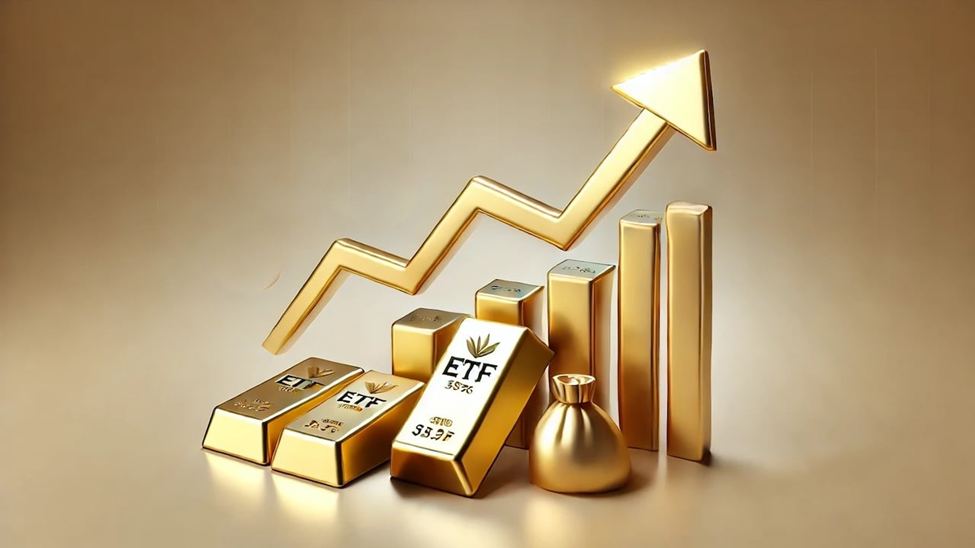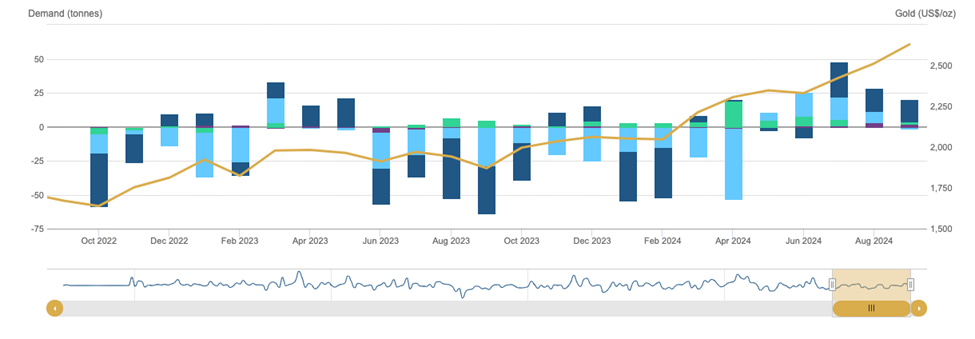by Mike Maharrey, Gold Seek:

Led by North American funds, gold-backed ETFs reported net inflows of metal for the fifth straight month in September.
Globally, ETFs reported a net 18.4-ton increase in gold holdings last month.
Collectively, gold ETFs held 3,200 tons of gold as of September 30.
A combination of gold inflows and rising gold prices raised the total assets under management (AUM) of gold-backed funds by 5 percent to $271 billion. Year to date, AUM by gold-backed funds have grown by 26 percent.
TRUTH LIVES on at https://sgtreport.tv/

North American funds led the way in September, adding 16.2 tons of gold to their holdings.
The Federal Reserve’s supersized 50-basis point rate cut drove bond yields and the dollar lower, creating strong tailwinds for gold. The dollar price of the yellow metal was up 4.6 percent last month.
According to the World Gold Council, “Similar to prior months, the surging gold price not only attracted investor attention but also led to exercises of in-the-money call options of major gold ETFs, creating sizable inflows at the expiry date.”
Geopolitical tensions, particularly the ongoing conflict in the Middle East, also attracted gold ETF inflows as investors looked for safe havens.
Europe was the only region to report ETF gold outflows in September, with holdings declining modestly by -1.7 tons.
Outflows primarily came from funds based in the UK. The Bank of England elected to leave interest rates unchanged at its September meeting. According to the World Gold Council, “The BoE’s cautious move cooled investor expectation of future rate cuts and fuelled a sizable rebound in UK gilt yields which coincided with major local gold ETFs’ outflows.”
German and Swiss funds both reported gold inflows last month. This was primarily due to a deteriorating economic outlook and safe haven demand.
Asian funds added gold to their holdings for the 19th straight month. The region’s ETFs reported the addition of 2 tons of gold. Strong price momentum and elevated geopolitical risks contributed to the continued inflows. More fundamentally, the demand for gold in Asia reflects a continued migration of the yellow metal from the West to the East.
Funds in other regions, including Australia, reported gold inflows of 1.9 tons. Australian and South African funds led the way. Australian gold ETFs have now registered inflows for four consecutive months.
Global gold trading volumes also rebounded in September, averaging 7 percent higher month-on-month. Over-the-counter trading activity was up 10 percent in dollar terms and 6 percent in tonnage terms.
COMEX total net longs continued to rise, reaching 976 tons by the end of September. That represents a 6 percent month-on-month rise and the highest month-end level since February 2020.
Inflows of gold into ETFs can have a significant impact on the global gold market by pushing overall demand higher.
ETFs are a convenient way for investors to play the gold market, but owning ETF shares is not the same as holding physical gold.
A gold ETF is backed by a trust company that holds metal owned and stored by the trust. In most cases, investing in an ETF does not entitle you to any amount of physical gold. You own a share of the ETF, not gold itself.
ETFs are relatively liquid. You can buy or sell an ETF with a couple of mouse clicks. You don’t have to worry about transporting or storing metal. In a nutshell, it allows investors to play the gold market without buying full ounces of metal at the spot price.



